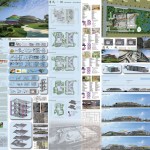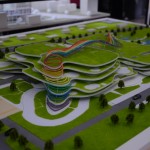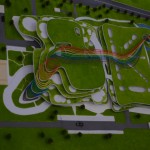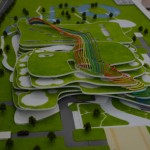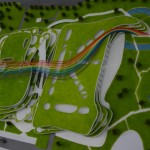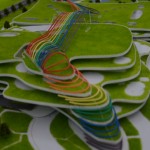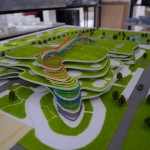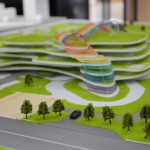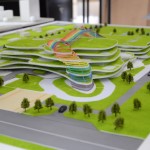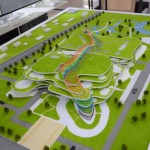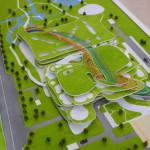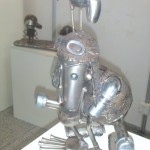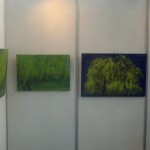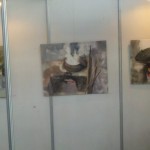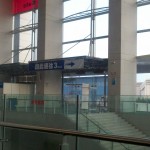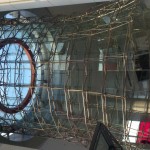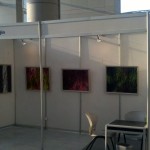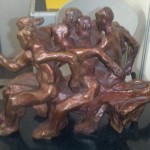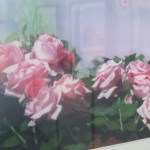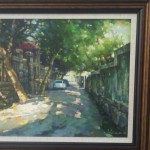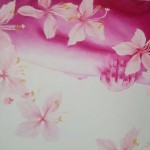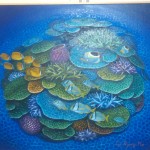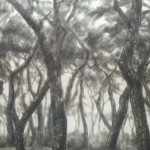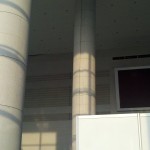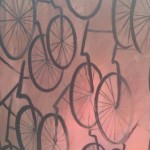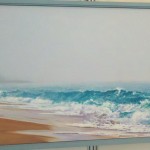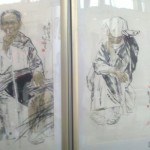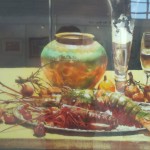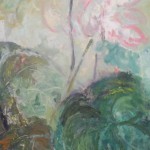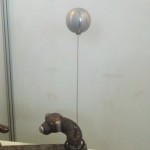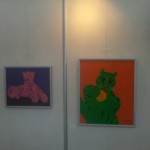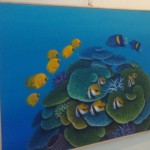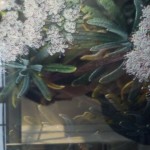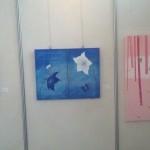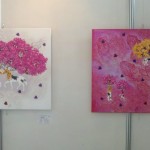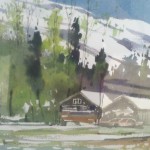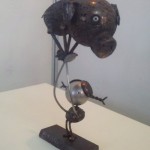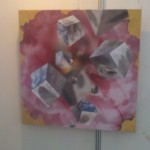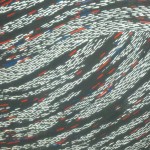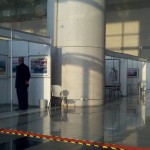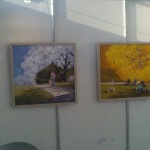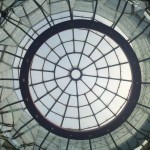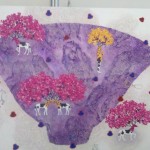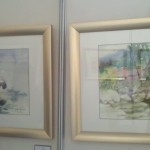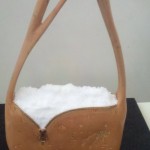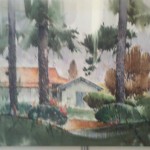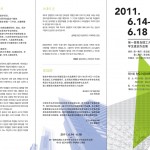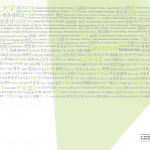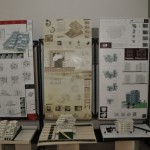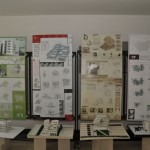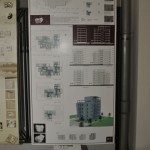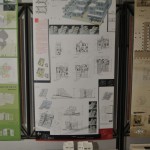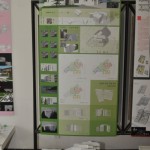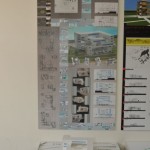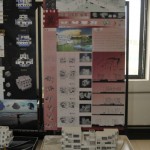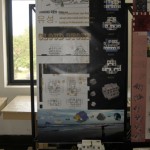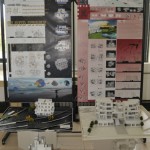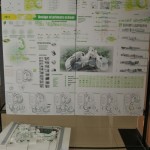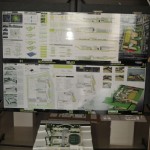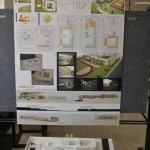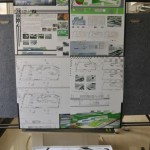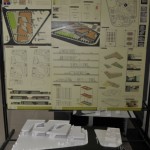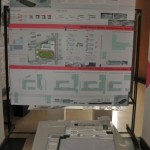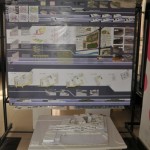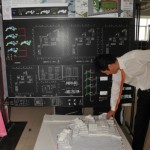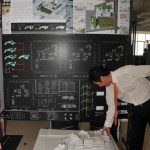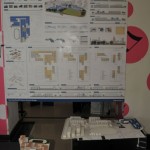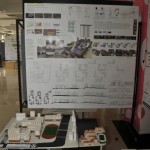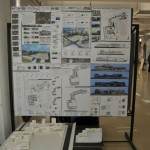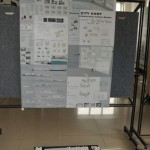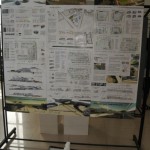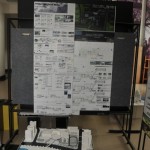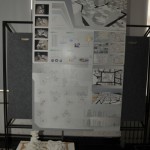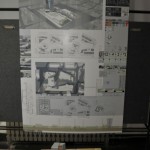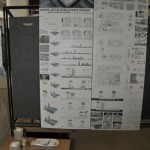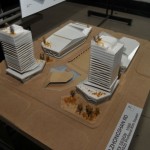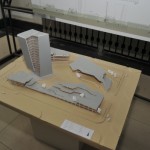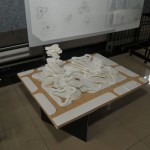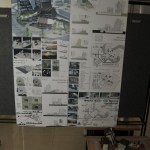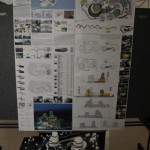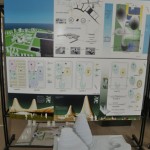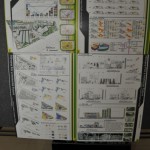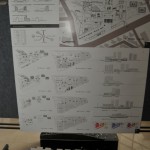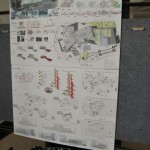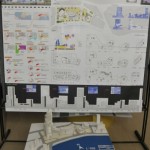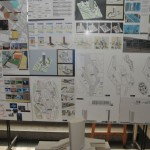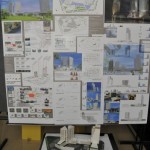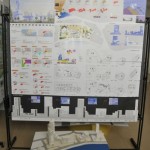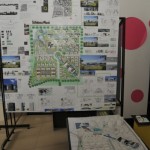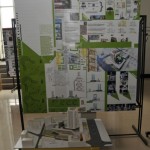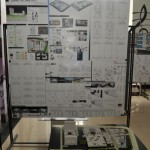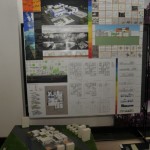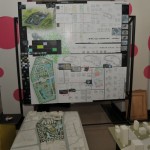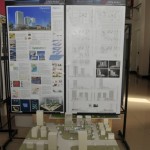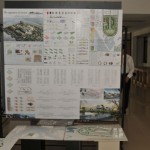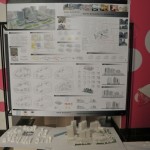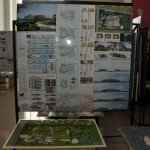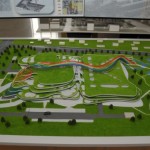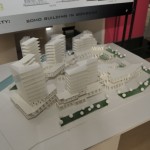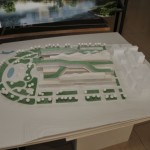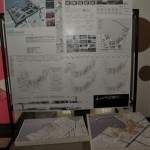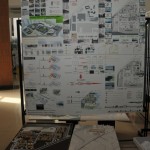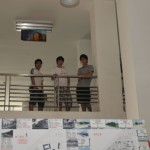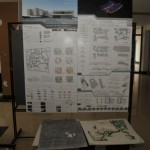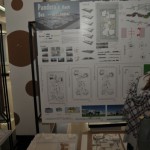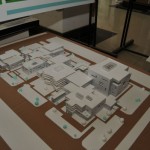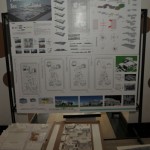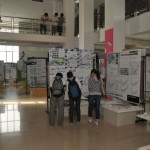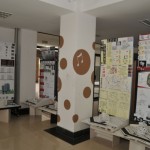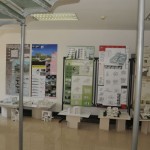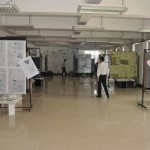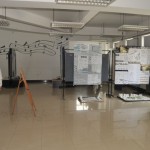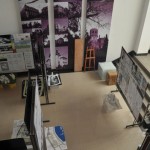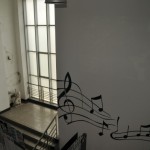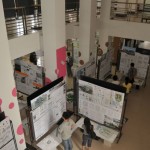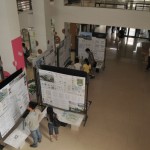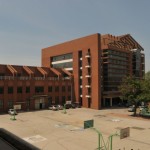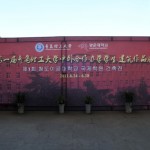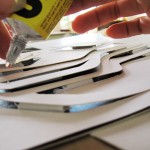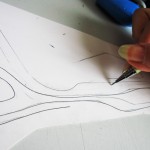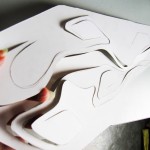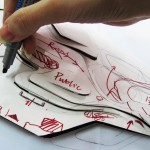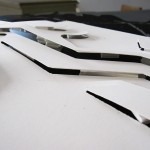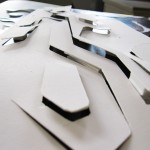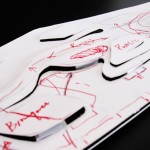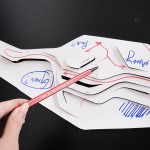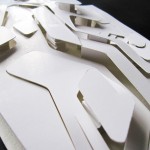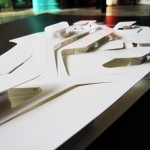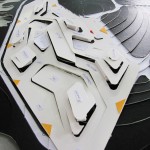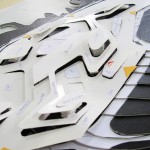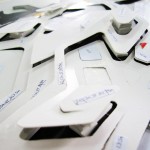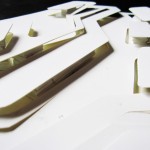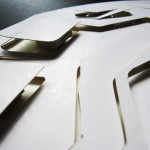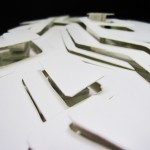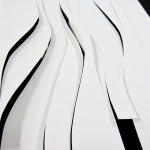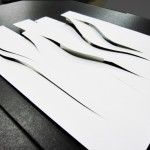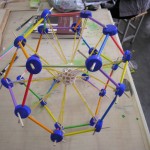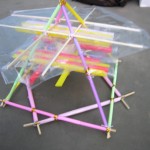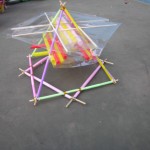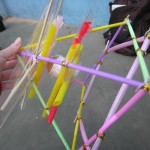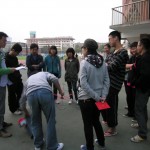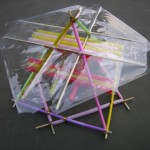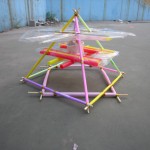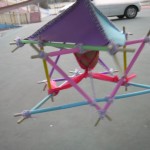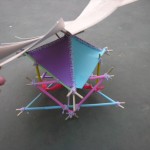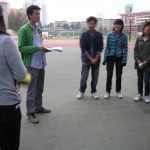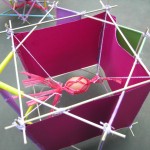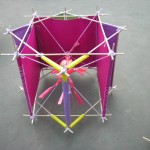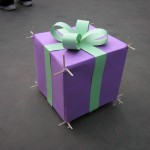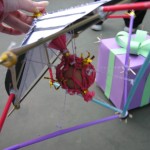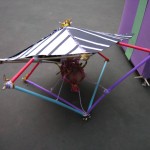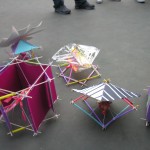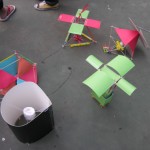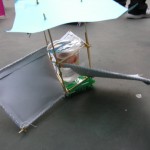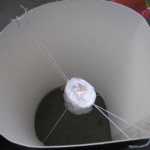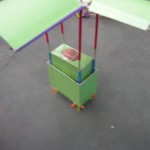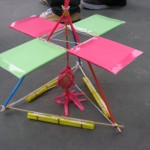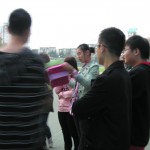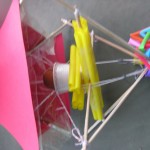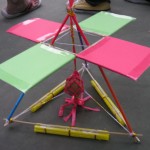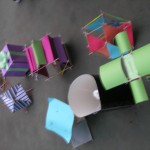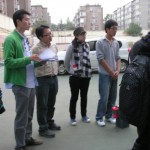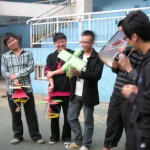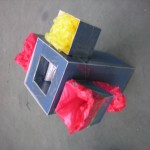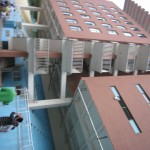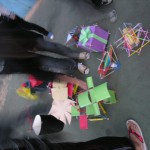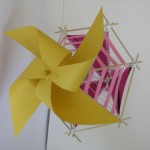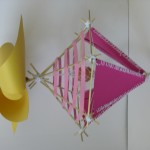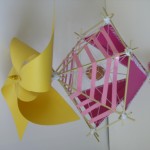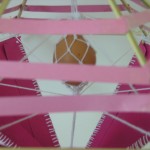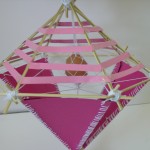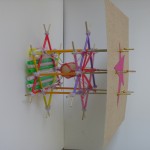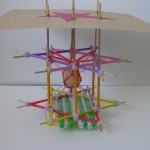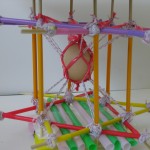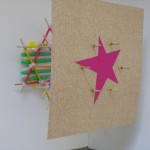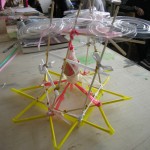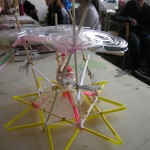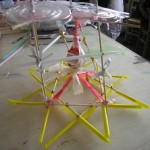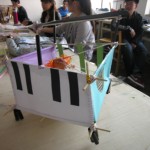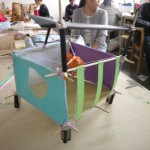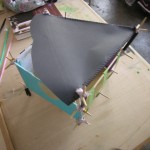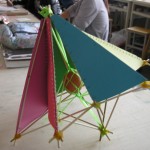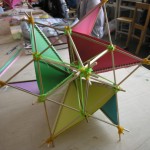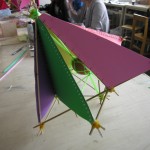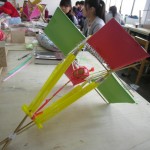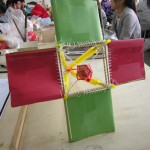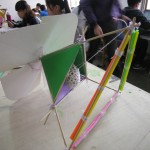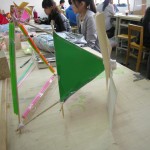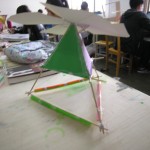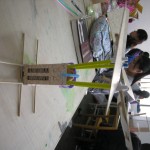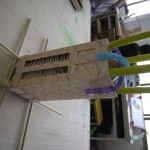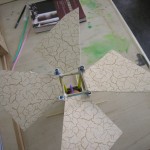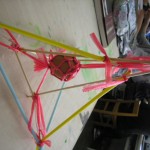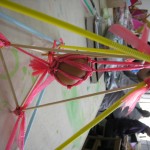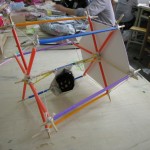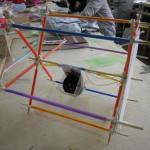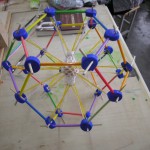
2011년 청도이공대학교 국제학부 건축학과 건축전 대상작 입니다.
All rights reserved by 우약양 & QDTech. International School of Architecture
설계개요 (设计概要)
-공 사 명: 어린이 병원
-대지위치: 청도시 성양구 홍양로 중단
-지역지구: 일반주거지역
-대지면적: 135,320.08m2
-건축면적: 16,545.86m2
-연 면 적: 80,456.33m2
-건 폐 율: 12.23%
-용 적 율: 59.46%
-도로현황: 북측28m도로, 서측35m도로
-구 조: 철골 철근 콘크리트조
-층 수: 지하 2층, 지상 5층(진료부), 4층(병통부)
-총병상수: 699병상
-주차대수 법정: 804.56대(80,456m2/100대), 계획: 870대
-조경면적: 108,624.35m2
-외장재료: 화강석 + 복층유리
-기준층고: 5m(진료부),3.6m(병통부)
-최고높이: 26.2m
-승강설비: 승객용 13대, 침대용 12대,화물용 10대, 에스컬레이터 6대
설계개념 (设计概念)
儿童是人类生命的延续,希望的寄托,社会的未来。在经济不断发展,科学技术飞速进步,人们生活质量逐步改善的当今社会,对儿童的关爱变得更加重要。本设计致力于寻求适合患儿身体行为和心理特征需求的人性化空间环境,实现使儿童医院建筑不仅能满足目前的功能需求,而且能很好的适应未的发展变化的目标,成为一种健康、和谐、生态和可持续发展的儿童医疗空间模式
Children are the continuation of human life, bearers of hope and the future of society. Care-taking of children is becoming increasingly prominent nowadays with economic development, scientific and technological progress, and improvement of life quality. The design of this children’s hospital represents efforts to create a user-friendly facility conducive to the healthy development of child patients’ physical, behavioral, and psychological characteristics. The designer hopes to make the hospital not merely a current provider of medical functions, but also a model which is constructed with conceptual elements such as health, harmony, and sustainable development and which is adaptable to future changes.
人性化设计:人性化指的是一种理念,具体体现在美观的同时能根据消费者的生活习惯,操作习惯,方便消费者,既能满足消费者的功能诉求,又能满足消费者的心理需求。人性化设计最核心的理念是“以人为本”。人性化的儿童医院是社会进步的标志。
User-friendly design: User-friendliness is defined as a concept embracing pleasing appearance, convenience, and the ability to satisfy consumers’ functional and psychological needs which rise out of consumers’ specific living and working habits. The very core of being user-friendly is being “user-oriented.” The construction of a user-oriented children’s hospital is the symbol of social progress.
生态建筑:在建筑的全生命周期内(从建筑规划设计到建筑材料的生产、运输、建筑施工、管理运行直至拆除 ),最大限度地节约资源(节能、节地、节水、节材)、保护环境和减少污染,为人们提供健康、适用和高效的使用空间与自然和谐共生的建筑。生态建筑不是一个静态的概念,而是一个动态过程。与生态医院建设相对应的是诸多不同的动态模式。
Ecological design: Throughout the full construction cycle (planning and architectural designing, producing and transporting building materials, managing and operating construction, cleaning up the construction site), this children’s hospital is designed to be a building coexistent with the nature and a building of health, high applicability and efficiency by maximizing resources conservation (including the resources of energy, land, water, and materials), protecting environment, and reducing pollution. Ecological architecture is not a static concept, but a dynamic process. There are variable dynamic models for the construction of ecological hospitals.
人性化
消除恐惧
外形
滑梯
风车
风
流线形
User-friendliness
Freedom from Fear
Shape
Slide
Windmill
Wind
Streamline
孩子在家庭以外的环境里,最亲近的莫过于丰富而新奇的游乐设施。为了满足儿童的归属性趋向性心理,本设计外形轮廓选定风车和滑梯作为概念,并从中提炼抽象的、隐含的语素和活泼的颜色,加以深化,赋予建筑的空间形体,呈现出全新感觉,让广大患儿首先从视觉外观上迅速接受,而不再是常规儿童医院冷峻的视觉冲击以及严肃的体块和大量长直线条表达所带来的惧怕感。
Nothing appeals more to children taken outside their homes than various types of novel entertainment facilities. Given children’s mentality for belonging and inclinations, this design chooses shapes of windmills and slides as its conceptual basis for the building’s appearance. Then, it employs and further processes lively colors and some abstract elements implied in those shapes to give the building its spatial formation as well as a refreshing touch. Child patients will find this design more visually acceptable than the conventional hospital which often looks scary for its cold visual impact brought by serious body masses and the use of large numbers of long straight lines.
色彩
年龄为2至3岁的幼儿期儿童喜爱艳丽明快的颜色,尤其是对比明显的颜色,有部分孩子对新鲜颜色的偏爱程度会持续整个儿童阶段。因此,为这一年龄段的儿童做设计时,应更多地使用明度高与纯度高的色彩。儿童的内心世界是丰富精彩的,他们具备超乎常规的想象力,他们对万物充满了好奇,哪怕是一块斑斓的色彩。这是因为儿童刚走入这个大千世界,脑子思维一片空白,什么都是新鲜的,需要简单的、新鲜的、强烈刺激的色彩,他们神经细胞产生得快,补充得快,对一切都有新鲜感
Color
Toddlers aged 2 to 3 have a preference for bright colors, especially contrasting colors. For some of them, the preference will persist through their entire childhood. Therefore, designs for toddlers of this age should use colors of higher brightness and purity. Children have a colorful inner world and possess unusual imagination. They are curious about everything in this world, sometimes merely a few colors. When children are born into this world, they are like a blank slate. Everything looks new to them. They need simple, fresh, and bright colors as stimuli for the production and reproduction of their neurological cells to sustain the freshness.
提供方便
多样休闲娱乐空间
多样辅助服务空间
高效便捷的医疗功能路线
“健康商场”
调节医患心理情绪
Amenities
Diverse leisure and entertainment zone
Diverse supplementary service zone
Efficient and convenient medical routes
“Health Store”
Doctor and patient mental health services
生态性
“园林医院”
资源优化合理配置
太阳能的应用
雨水收集净化利用
再生水资源利用
建筑内部空间尺度的控制把握
Ecology
“Garden-like Hospital”
Resources optimization
Use of solar energy
Use of rainwater
Use of recycled water
Control of inner space scale
在浓荫下的绿色环境,是使人类回归生命起源、激发生命活力的最佳场所。因此,欧洲和北美的很多医院依傍在远郊密林近处,可以享受而又不破坏原有绿化环境。医院的设计应以生态的概念贯穿整个设计过程,强调对自然条件的尊重,对基地地形地貌、日照、风向、土壤、水资源、绿化等条件进行深入的调查与分析,并加以合理利用。病人能够看到绿地、蓝天、白云,呼吸着清新的空气,激发起追求生命的欲望和战胜病痛的意志,从而达到几级配合治疗的目的;同时医护人员能置身于优美的环境之中,身心舒畅,对提高工作效率大有益处。
A building sitting in the shade is an ideal place where residents can feel the come-back of life and energy. That is why many hospitals in Europe and North America are often located next to thick suburban woods where they can enjoy benefits of the green environment. The ecological concept should be built into the entire design process of hospitals. The process should respect and give sufficient importance to natural conditions of the location. It should research and analyze such conditions as topography, landform, sunshine, wind, soil, water, and greening. The design process should also look into how to make reasonable uses of those conditions so that patient residents can breathe fresh air and see the green land, the blue sky, and the white clouds. Patients living in the green environment are very likely to cooperate with treatments as those patients have a stronger desire to live and are more determined to get rid of the disease. Likewise, doctors and nurses working in the green environment tend to feel good both physically and mentally so as to become efficient performers.
彩色太阳能电池板能够吸收太阳光光谱中不同颜色太阳光的光能,因此其在工作的时候可以不用正对太阳。这种太阳能电池板每产生一瓦特的能量,所需费用不超过一美元,能够达到最高20%的转换率,是目前市场上供应的普通太阳能电池板转换效率的两倍。而目前,常规太阳能电池板每产生一瓦特的能量,所需成本为四美元。而且它能够在不集中吸收热量的情况下,吸收可见光以及紫外光。常规太阳能板吸收光的同时必须吸收热量,必然会降低太阳能电池板的工作效率。
Color solar panels work perfectly well even without facing the sun as they can absorb solar energy emitted from different colors of the sunlight. The unit cost of producing one watt of energy by using this type of solar panels is less than one U.S. dollar. The conversion rate, however, can be as high as 20% percent, doubling the conversion rate of conventional solar panels available in the market. Today, unit cost for normal panels to produce one watt of energy is four dollars. Color solar panels can absorb visible light and ultra-violet light without intensely absorbing heat. In contrast, conventional panels cannot absorb light without absorbing heat, which inevitably reduces their working efficiency.
创造高效便捷的医疗功能路线和人性化的生态就医环境是贯穿本设计的始终主题。急诊区,手术,病房区建立起绿色通道,使抢救过程畅通无阻;医患分流,洁污分区;各种医护用房和服务性用房的完善配置,为患者提供了一个高效能的现代化就医环境。
The theme of this design is to create efficient and convenient medical treatment routes and a user-friendly environment. Green channels are set up leading to emergency rooms, surgery, and wards, effectively removing possible barriers on the way of rescue. By diverting doctors and patients, separating sanitation areas, and optimizing the ratio between medical rooms and service rooms, this design aims to build a highly efficient modern medical environment.
当今医院早已跳脱早期的医疗服务,而进入到健康服务阶段,来到医院的使用者不再只是传统带有病容的患者,更包括了来到医院做健康消费的一般大众。到医院来应该是愉悦的,如同到商场购物一般。
The hospital has moved away from a mere medical service provider of early times to today’s health care provider. Users of the hospital are not necessarily sick-looking people in the traditional sense. They may also be general health care consumers. Seeing the doctor is becoming as enjoyable as going shopping.
医疗街的宽度具体根据门急诊人流流量确定,不应一味地求大求阔;应适当安排大中小比例,以做到物尽其用、物有所值,免去层流净化设备容量及维护的浪费。
How broad the medical street is depends on the traffic for emergency services. The street doesn’t have to be too large or broad. It should be able to adjust its size according to demand and its added value so as to keep ventilating and cleaning capacities and maintenance costs within certain limits.
建筑三部分以各自的主导功能为核心,相对独立,通过立体架空环廊作为连接纽带,成为有机组合的建筑群体。
Three parts of the building are separate from each other providing independent functions. Meanwhile, as integral parts of the whole building, they are also connected through corridors.
病人在不与车辆冲突、宁静安全舒适的环境中,在花繁叶茂的绿地上来往和休息。
Patients are walking or resting on the grass enjoying the quiet, safe, and agreeable environment without being disturbed by passing vehicles.

